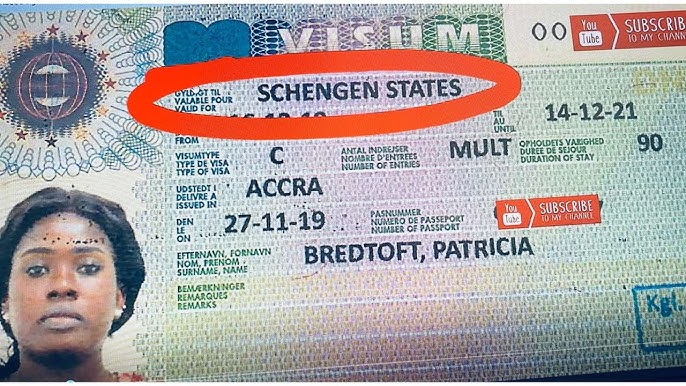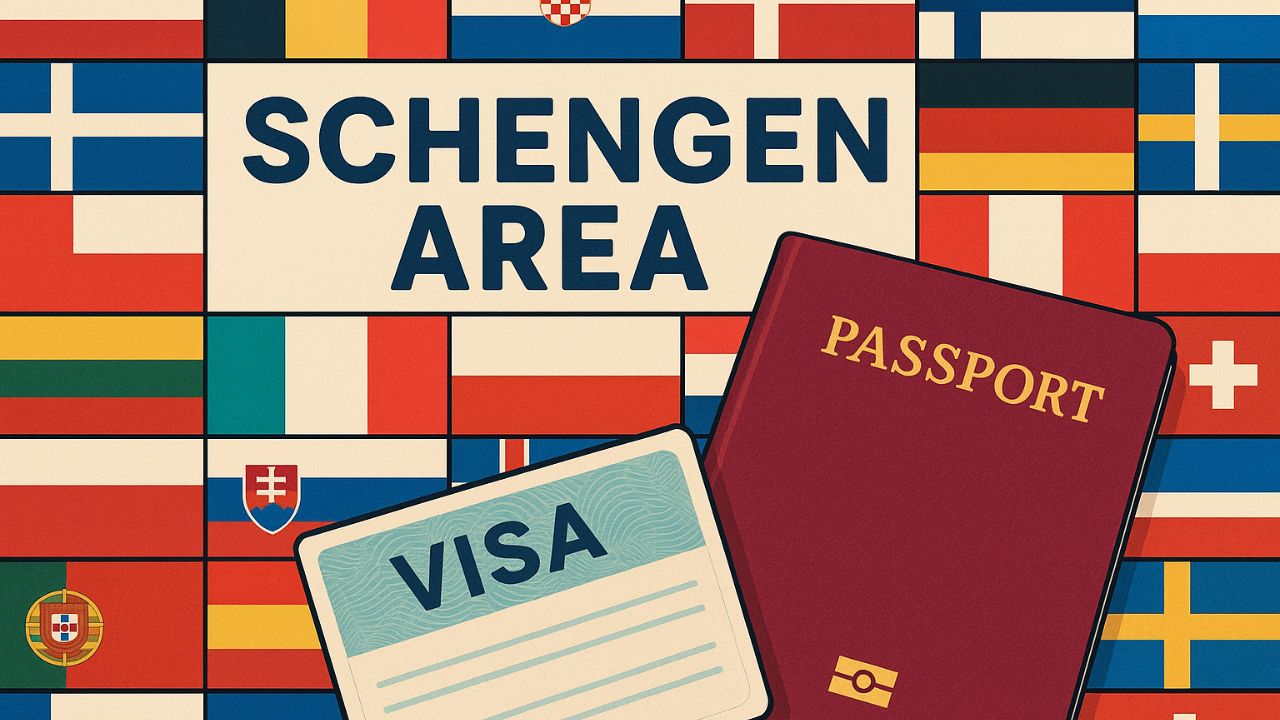A Schengen visa is a short-term travel visa that lets you visit multiple European countries with just one document.
It's valid in 27 countries across the Schengen Area, including France, Germany, Italy, Spain, Switzerland, and others. Once you enter one Schengen country, you can travel freely to others without border checks.
This visa is mainly used for tourism, business, or family visits. It allows stays of up to 90 days within 180 days. You can apply for single-entry, double-entry, or multiple-entry visas depending on your travel plans.
For Indian travellers, getting a Schengen visa has become easier in some ways but also stricter in others. New rules now offer longer validity for frequent travellers but also demand precise paperwork.
Countries like Switzerland have tightened their document requirements, accepting only what's listed in the official checklist. In this article, we'll break down the latest updates and how they affect Indian tourists.
What is a Schengen Visa?

Source: YouTube
A Schengen visa is a short-term travel permit that allows non-EU nationals to visit and move freely within the Schengen Area. The Schengen area comprises 29 European countries that share open borders, enabling seamless travel.
These countries are Austria, Belgium, Bulgaria, Croatia, the Czech Republic, Denmark, Estonia, Finland, France, Germany, Greece, Hungary, Iceland, Italy, Latvia, Liechtenstein, Lithuania, Luxembourg, Malta, the Netherlands, Norway, Poland, Portugal, Romania, Slovakia, Slovenia, Spain, Sweden, and Switzerland.
These countries have removed internal borders, making travel between them seamless and easy. Popular destinations like France, Germany, Italy, Spain, and Switzerland are part of this zone.
The visa is ideal for tourism, business, or family visits. It allows stays of up to 90 days within 180 days. There are different types: single-entry, double-entry, and multiple-entry visas. For Indian travellers, the Schengen visa is essential for trips to Europe.
The process involves submitting documents such as a passport, travel insurance, flight tickets, and financial proof. You must apply through the embassy of the country where you'll spend the most time or the first country you'll enter.
What Are the New Rules for Indian Travellers Mainly Visiting Switzerland?
Recently, VFG Global, a visa application company (VAC), announced new rules regarding changes to the Schengen visa for Indian citizens planning to travel to Switzerland. Here are the key rules:
- A valid national passport issued within the last 10 years must have at least three months' validity after the return date and contain at least two blank pages.
- One passport-size photograph, taken against a white background and dated within the last six months.
- Complete and signed visa application form. If needed, a third-party authorisation should also be provided.
- For business travel, an original letter of introduction on business letterhead from the applicant's employer is required. This letter must be signed and stamped by HR or the director and should include the applicant's job title, work duration, and a 'no-objection statement' for the trip, specifying the travel dates and purpose.
- Flight reservation
- Travel insurance
- Hotel booking confirmations, package tours, or proof of advance payments.
- Financial documents that include salary slips, bank statements, and personal income tax returns (ITRs).
Other New Changes in Schengen Visa for Indians

The significant new changes in Schengen Visa rules for Indians include the introduction of the "cascade" regime for long-term, multi-entry visas, digitisation of the visa process, stricter documentation requirements, fee changes, and modifications to the appeal process.
Key changes are:
- Cascade Visa Regime: Indian nationals can now obtain a two-year multi-entry Schengen visa after having lawfully used two Schengen visas within the past three years. This can be upgraded to a five-year multi-entry visa if the passport remains valid.
- Holders of these visas enjoy travel rights similar to those of visa-free nationals; however, these visas do not permit work, and stays must not exceed 90 days within any 180-day period.
- Fully Digital Schengen Visa: The EU will phase out traditional visa stickers and shift to a digital 2D barcode visa. Application, document uploads, fee payment, and tracking will become entirely online, improving speed and transparency.
- Biometric submission remains required but will be streamlined for repeat travellers. This will be fully operational for all EU states by 2028, with the initial rollout and border system (EES) set to start from October 2025.
Updated Documentation and Application Rules:
Only documents listed in the official checklist will be accepted; no additional papers or post-submission appeals/clarifications will be considered. For example, only the first and last three pages of lengthy bank statements are accepted.
Required documents include a valid passport (recent, with at least 3 months' extra validity), a recent photo, a signed application, an employer's introduction, comprehensive travel insurance, booked travel/accommodation, and financial proof. Family and student applications have specific rules.
- Abolition of Remonstration (Appeal) Process: Germany has discontinued the informal remonstration (appeal) process for rejected visa applications. From July 2025, rejected applicants will be required to pursue formal legal action to appeal, making the process more challenging and costly.
- Centralised Processing & Appointment Flexibility: Visa application processing is now more centralised, allowing applicants to choose from a wider selection of Visa Application Centres across India, rather than being restricted by residence-based jurisdiction. This makes the process more user-friendly.
- Fee Increase: A proposal has been made to increase the Schengen visa fee for adults to ₹8,000. This change is under consideration and may be implemented soon.
New Entry/Exit System (EES) and ETIAS:
- EES, launching in October 2025, will digitise passport control with biometric checks for entry/exit, replacing manual passport stamps.
- ETIAS (target 2026) will affect visa-exempt travellers (not most Indians, who require visas), requiring online pre-authorisation before travel.
- Indians with an established travel history will find travel to Europe easier, faster, and more convenient; however, documentation must be exact, and appeals against rejection are more challenging. Changes also support stronger strategic ties between the EU and India.
Comments
All Comments (0)
Join the conversation